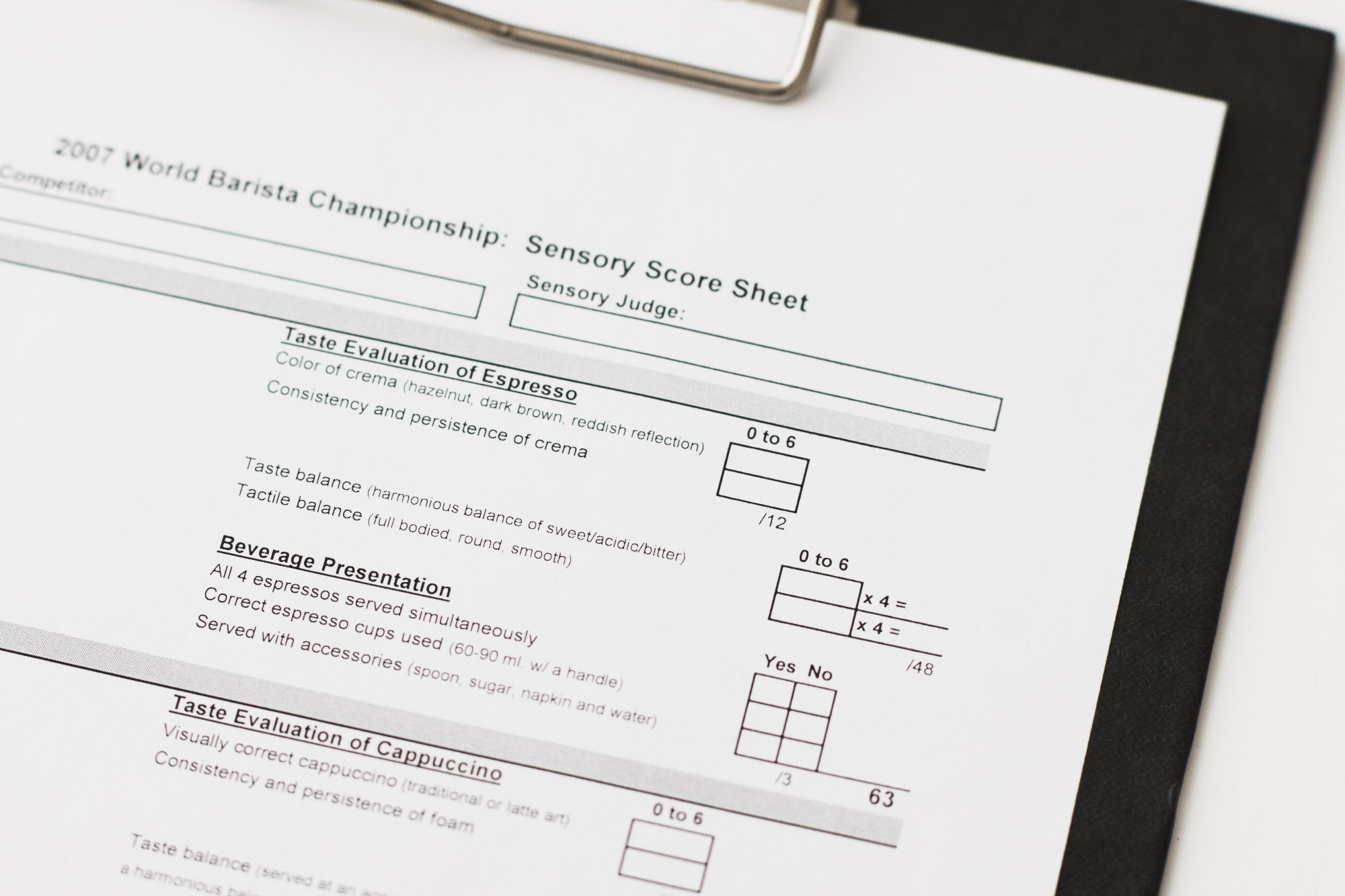It is not only cuppings and brewed coffee that needs to be QCd in modern coffee businesses. It is important that baristas are trained in how to recognise quality in espresso. The World Barista Championship (WBC) espresso scoresheet makes a useful template for scoring espresso in Cafe QC purposes, such as dialing-in in the morning. The WBC scoring system ranges from 0–6 and, just like the SCA Arabica Cupping Form and the Cup of Excellence scoresheet, the numerical system corresponds with a series of adjectives that help judges work out their response to the different elements of the scoresheet. For example, a score of 2 equates with the word average, 3 with good, and 4 with very good. Gwilym Davies tells us he has trained staff and calibrated staff to use a score of 3.5 out of 6 as a baseline for their house blends in his cafés in the past.
The WBC gradation scale where points equate with adjectives: 0 = unacceptable, 1 = acceptable, 2 = average, 3 = good, 4 = very good, 5 = excellent, 6 = extraordinary.
 The espresso category of the 2007 WBC scoresheet.
The espresso category of the 2007 WBC scoresheet.
The World Barista Championships started in 2000 in Monte Carlo. In the 20 years since its inception, the scoresheet has evolved a lot. Here is a scoresheet from 2007, which went as far as stipulating what colour the crema should appear, looking for a range from hazelnut to reddish brown. Over time, because of the tendency in roasting styles to become lighter than they were at the turn of the century, crema was tending to be thinner and lighter coloured, even with the best espressos. For this reason, it was deemed unnecessary to continue to track the colour, of crema. A few seasons later, World Coffee Events removed the rule governing the ‘thickness and persistency’ of crema. In 2020, there is only one point available for visual appearance where crema is expected to cover the entire surface of the beverage at the time it is served.